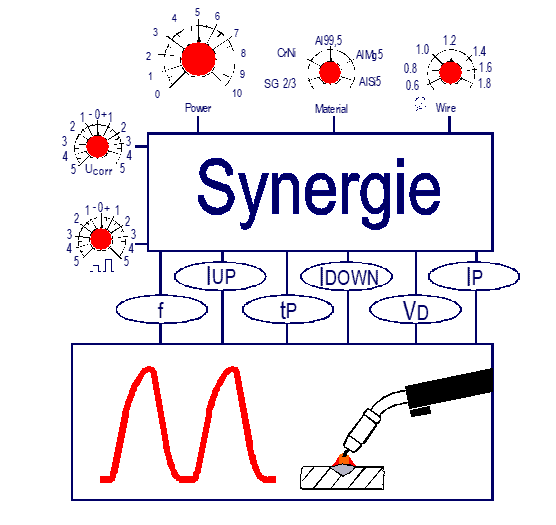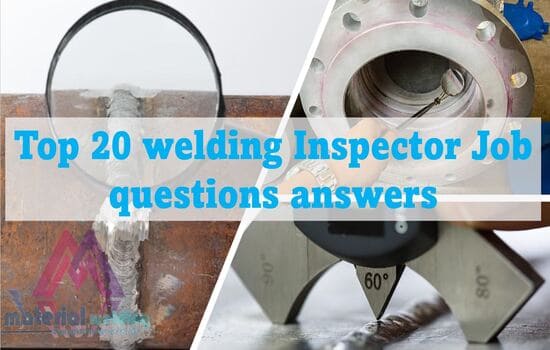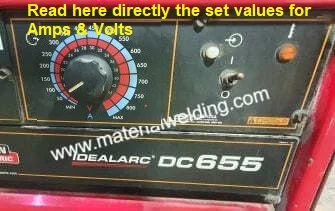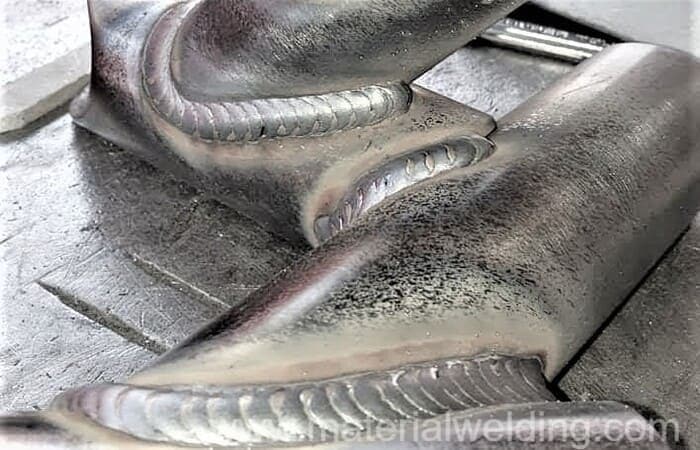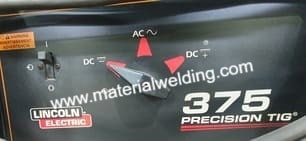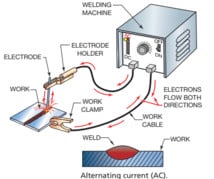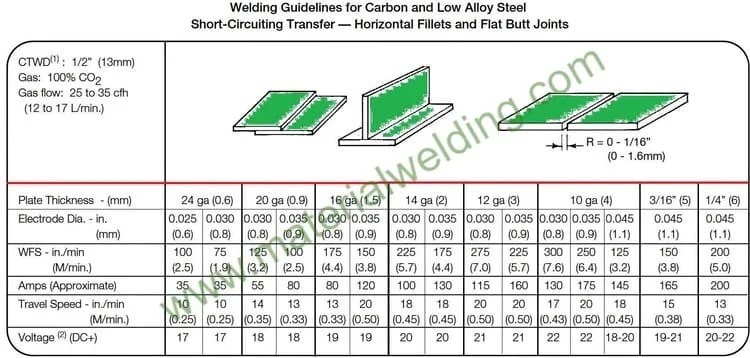Importance of setting correct welding parameters in MIG-MAG Welding?
Simple parameters and the verification of the weld test result enable the welder to set his MIG or MAG welding machine correctly.
With a welding machine that is perfectly adjusted to the material and material thickness, perfect results can then be achieved.
A visual representation to show these effects can be found in the below image:

Before you start the welding, you need to look answers for below questions:
- Material to be Welded e.g. carbon steel or stainless steel or cast iron?
- Material thickness to be welded?
- How to make the weld Joint?
- Which type of welding gas and Filler Wire is needed?
- Did you setup the machine correctly?
- What are sources to check MIG welder Setting?
Types of MIG-MAG Welder/ Welding machine
There are basically three different versions of MAG welding machines:
- High-end devices with digital settings (Synergic MIG).
In most cases, the user selects a program from a list, selects the sheet thickness and, depending on the manufacturer, receives a more or less good result. Which can usually still be easily adjusted.
What is Synergic MIG Welding? - MAG welding machines with one-button operation: is often seen as the simplest variant. However, the options are often very limited, as the current strength and wire feed cannot be controlled separately. These devices have also largely disappeared from the market today.
- MAG welding machines with the variable settings of voltage/amperage and wire feed.
So, the classic device for do-it-yourselfers, small workshops, car mechanics, etc. Wire feed and the current strength or voltage can be regulated separately from each other, so the welder must be able to interpret the result.
He must therefore be able to draw his conclusions from the result and adjust the parameters accordingly.
Related Reading: MIG Welding Sheet Metal Setting Charts.
Criteria for the correct setting of a MAG welding system
But which criteria of the weld seam should the welder pay attention to?
- The appearance of the weld seam: Basically, the welder / user should be able to evaluate his result or the weld seam.
- Sound: A well-adjusted MAG welding machine can usually be recognized by the buzzing sound.
- Observation of the welding process: Last but not least, the process must of course also be observed during the welding itself. The weld pool and wire feeder should be coordinated with one another. Splashing should be kept to a minimum.
- Tips for buying a Welding Machine for home use.
Make a test run-Before you make actual weld
The key to setting up a Mag welder is a test sheet. So, a sheet that has as much in common with the later workpiece.
For example, material, thickness, etc., this is the only way to weld usable values.
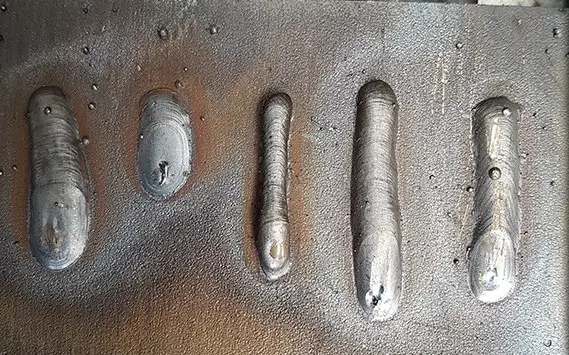
If you are using a new power source, better follow the qualified WPS parameters. Use a short arc. If you are welding this sheet, you should use the short circuit transfer mode. For thick parts and fill passes use spray transfer mode.
Metal Transfer Mode in GMAW, FCAW & SMAW
When welding in the horizontal weld positions, the highest deposition rates can be achieved, where welding speeds need to be increased accordingly, in order to avoid an excessively large, forward-moving weld pool.
The use of torches, whether applied prematurely, neutrally (perpendicular), or with a delay, influences the penetration shape and the external geometry of the seam.
Inserting the torch too quickly spreads the bead, however, the penetration and the bead height will be lower.
If the torch is inserted too quickly (> 20° for butt welds and > 35° for fillet welds), the penetration can be considerably reduced by a forward-moving weld pool, so that a lack of fusion occurs.
During sluggish torch position, the weld is narrow and too tall, the penetration is deeper.
With constant welding data, an increase in welding speed reduces the weld cross-section.
In case same weld profile is to be targeted with this increased travel speed, other welding parameters such as current, voltage (WFS) shall also be increased.
In MIG-MAG you can use a high travel speed but in stick welding it is difficult due to manual movement of rod.
